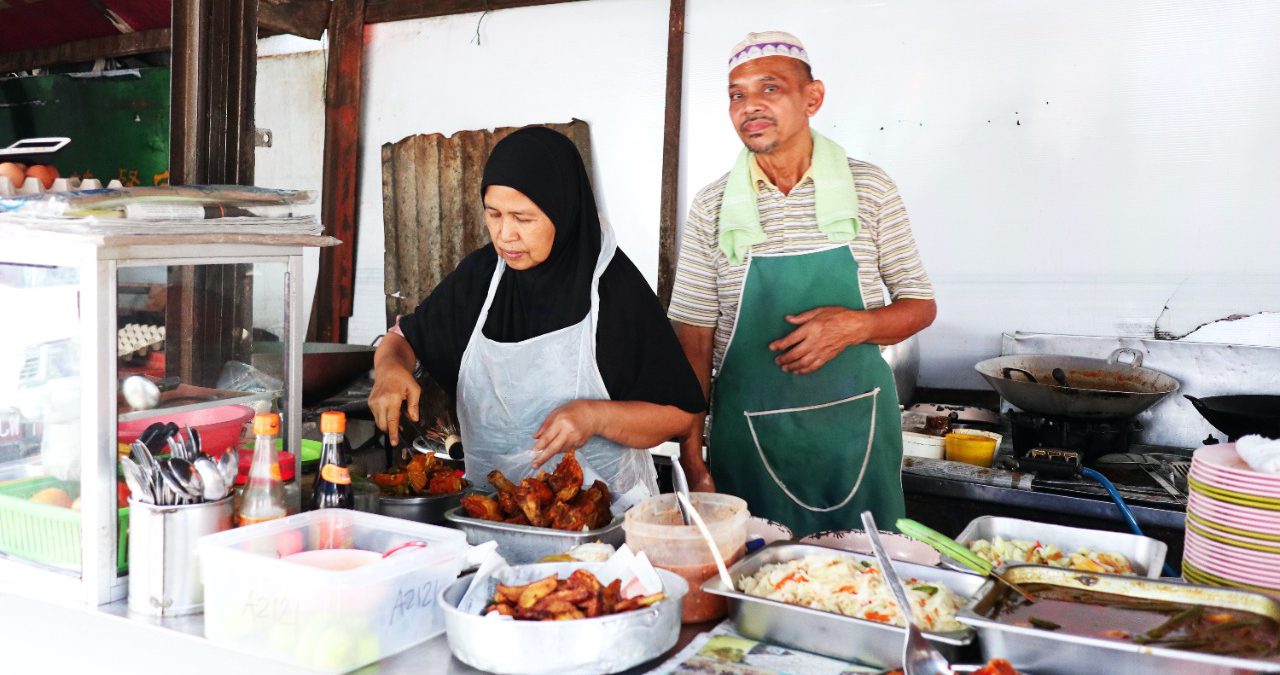
Keep up with our latest news and projects!

Walking down the bustling streets of Downtown Kuala Lumpur (KL), one occasionally finds street hawkers selling food and beverages in their makeshift carts. Street hawkers are preferred eateries for Malaysians as they serve local favourites at generally affordable prices. Eating in an outdoor or semi-shaded environment can also offer respite from stuffy and non-air-conditioned eateries.
Street hawkers that operate in the laneways of Downtown KL are an inextricable part of the city’s intangible heritage. Away from busy main streets, these hidden gems are located on pedestrian laneways between low-rise traditional shophouses. This preferred typology of hawkers has given the city a unique place identity and an important anchor for its local community.
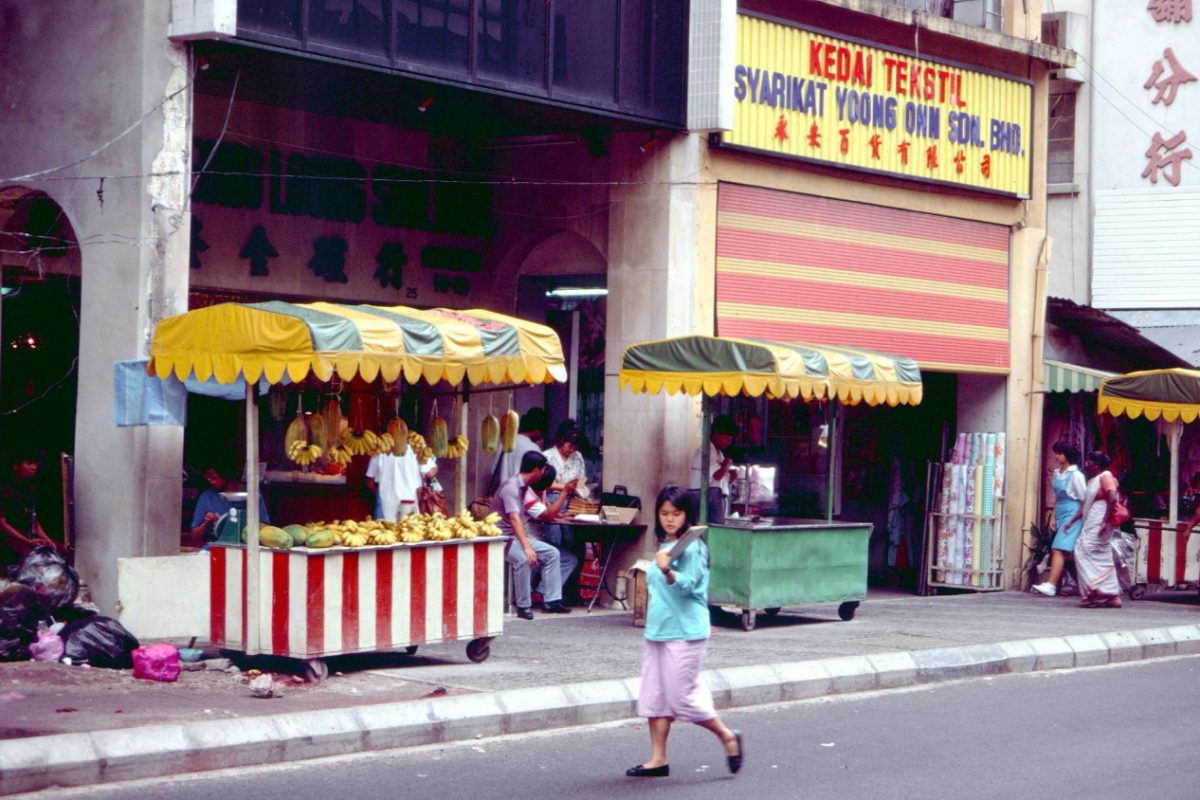 Street hawkers on Lebuh Pudu, Downtown KL, March 1989.
Street hawkers on Lebuh Pudu, Downtown KL, March 1989.
Kuala Lumpur, like many of its peers, is slowly being transformed into a safer, cleaner and less chaotic city. In the last two decades, the Kuala Lumpur City Hall (KLCH) has been working hard towards resolving the city’s social problems, including the regulation of illegal street hawkers. In 1997, it was reported that there were 36,500 petty hawkers and traders in Kuala Lumpur (Nazri 2019).
KLCH understands the importance of retaining some street hawkers as part of intangible heritage with cultural and touristic value. Old establishments, transformed into familiar landmarks, also offer a form of wayfinding, a tool to navigate busy streets. These eateries also serve as nodes of society, by giving locals a place to hang out without needing to spend much money. As far as KLCH is concerned, it does tolerate some irregularities as long as there is acceptance from the local community.
Still, KLCH has embarked on a drive to clear the city’s sidewalks and major roads from street hawking, to improve walkability, traffic flow, and to create neater-looking public spaces. While necessary, this has inadvertently pushed some street hawkers to cease operations altogether, or to move to food courts, wet markets, or other approved locations. This has an immediate impact on the social value of the city, as regular customers lose a familiar place to meet and hang out. These processes fracture good community relationships, as it takes time for locals to find another eatery they are comfortable with.
Over the years, enforcement activities, coupled with natural attrition from retirements or the lack of successors has led to a decrease in the number of street hawkers in Downtown KL.
It should also be noted that in the past, hawker stalls were mostly temporary arrangements. Today, many of them have become somewhat semi-permanent or permanent institutions, with KLCH itself now taking the lead to provide licensed hawkers with permanent stalls at specific laneways, complete with utilities.
The laneways of Downtown KL continue to draw office workers, passers-by, and people in search of good food. The cluster of hawkers located at Lebuh Pudu and Jalan Hang Lekiu, nestled between rows of traditional shophouses that typically open for breakfast and lunch only, regularly serve up to 50,000 office workers. Over the decades, they have developed into a tightly-knit community. These disparate stalls have created an ecosystem where culture, race, and socioeconomic classes mingle in a distinctly Malaysian way.
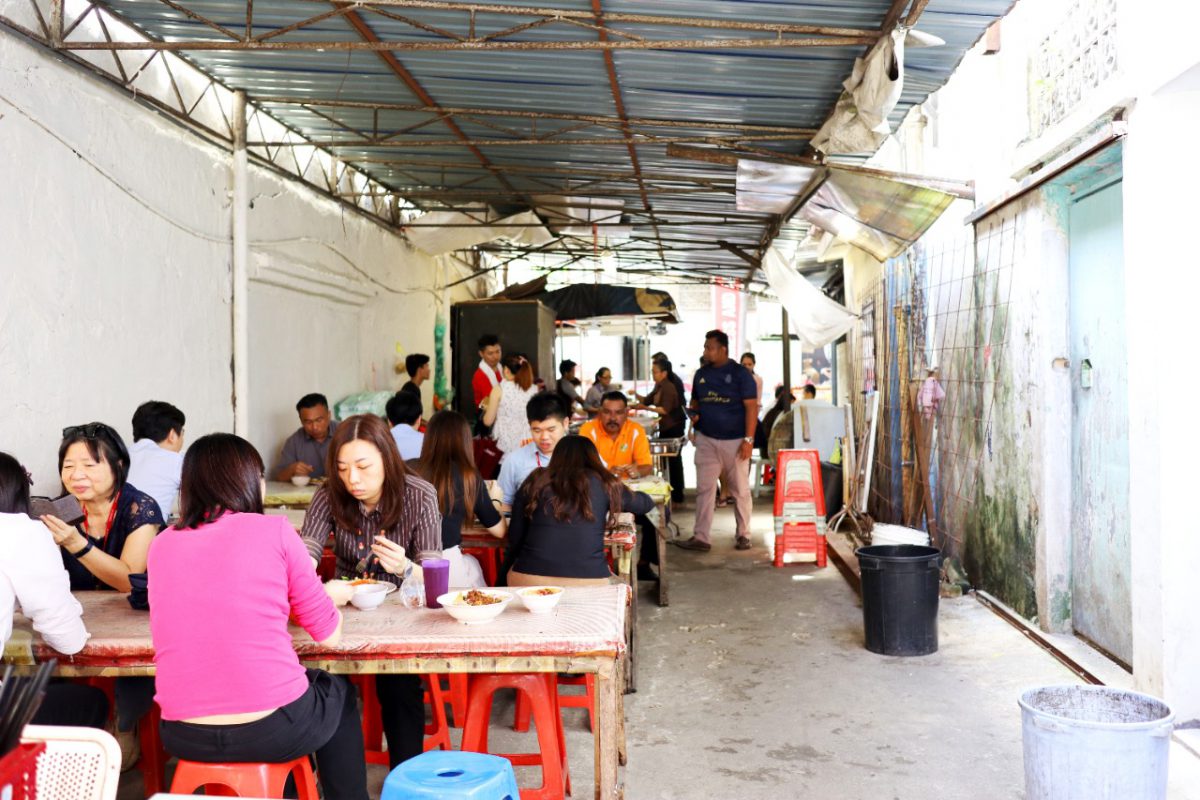
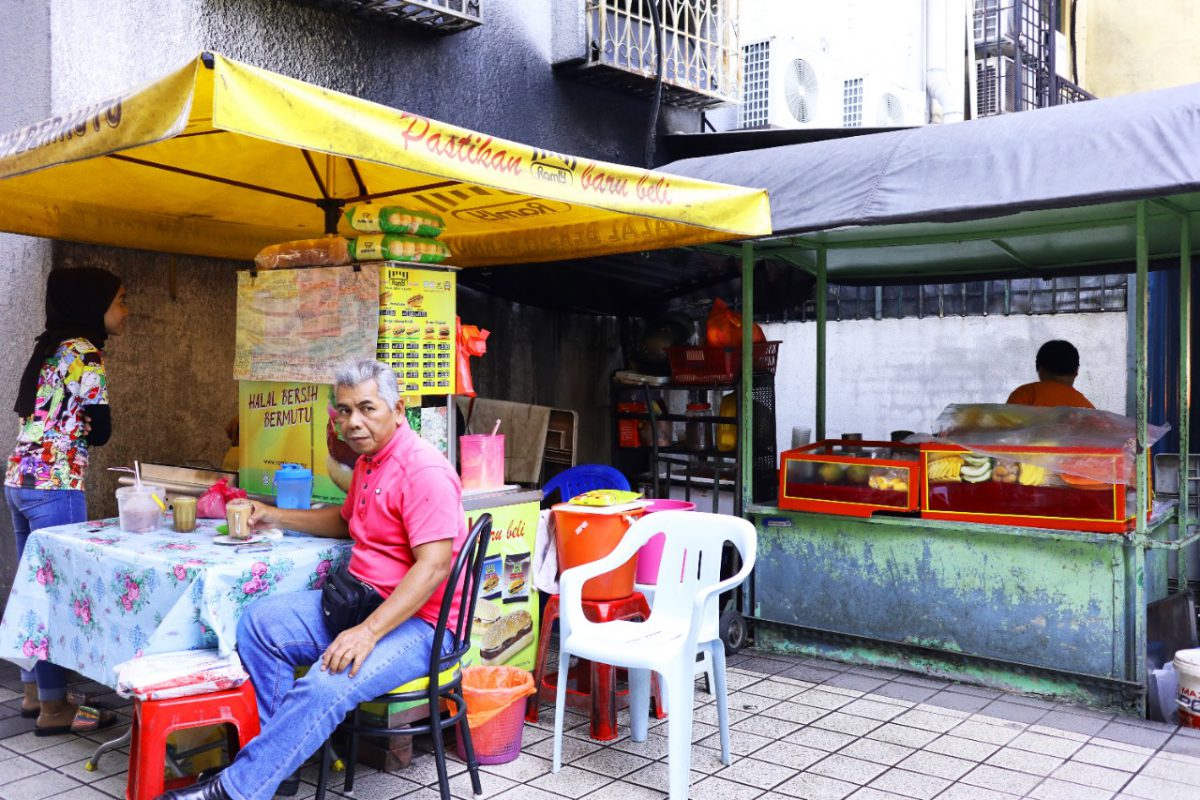
Location: Laneway off Jalan Hang Lekiu
Years of operation: 38 years
Best seller: Curry Ikan tenggiri curry (mackerel)
Cuisine type: Malay
“My husband (Syukri) learned to cook from his brother. We were both from Kelantan and came to Kuala Lumpur 40 years ago. We started off sharing a stall with another vendor. We eventually took over the stall when she retired. Our stall has no signage, but we are known as Warung Mek Kelantan”, says Kak Ramlah.
Location: Laneway off Jalan Hang Lekiu
Years of operation: 32 years
Best seller: Wantan noodle
Cuisine type: Chinese
“This is my father-in law’s noodle stall. He taught me the recipe and I took over the stall when he passed away 22 years ago. My customers are mostly college students and office workers. Life as a street hawker is difficult. I wake up at 4am every day to start prepping. My kids are not interested in the business, so I hired staff to help me out”, said Sister Ngor.
Location: Laneway off Jalan Hang Lekiu
Years of operation: 40 years
Best seller: Egg curry puff
Cuisine type: Southeast Asia
“My husband and I started off on the main street of Jalan Hang Lekiu. Eventually KLCH eradicated street hawkers, and we ended up on the laneway. We’ve been here for so long and have good relationships with other hawkers like Kak Ramlah,” said Mrs Yeong.
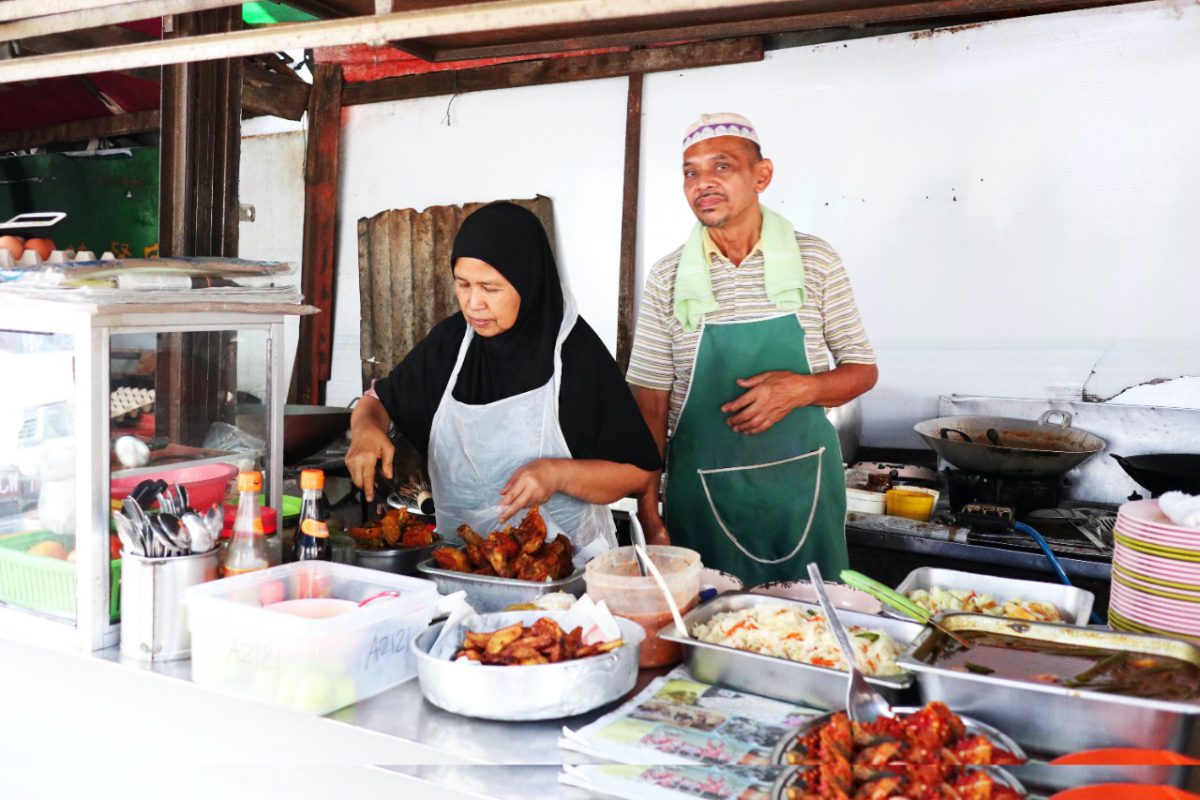 Kak & Syukri Ramlah
Kak & Syukri Ramlah
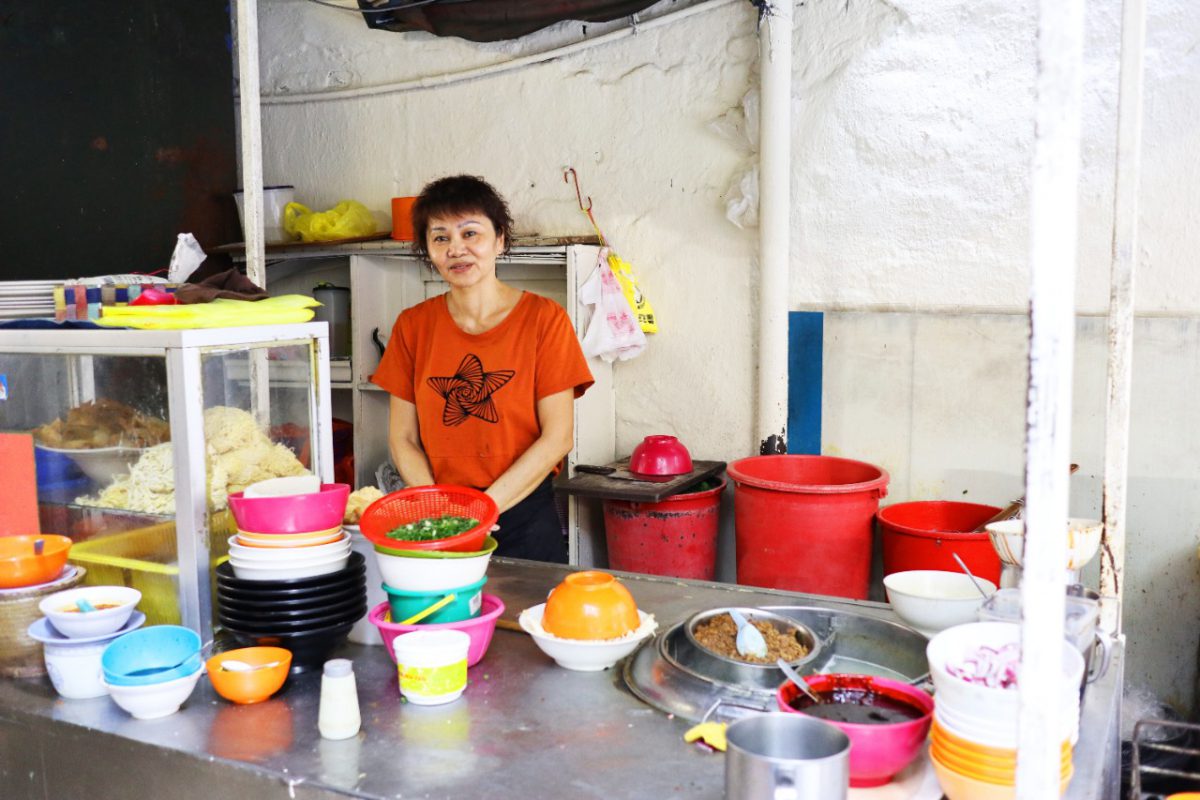 Sister Ngor
Sister Ngor
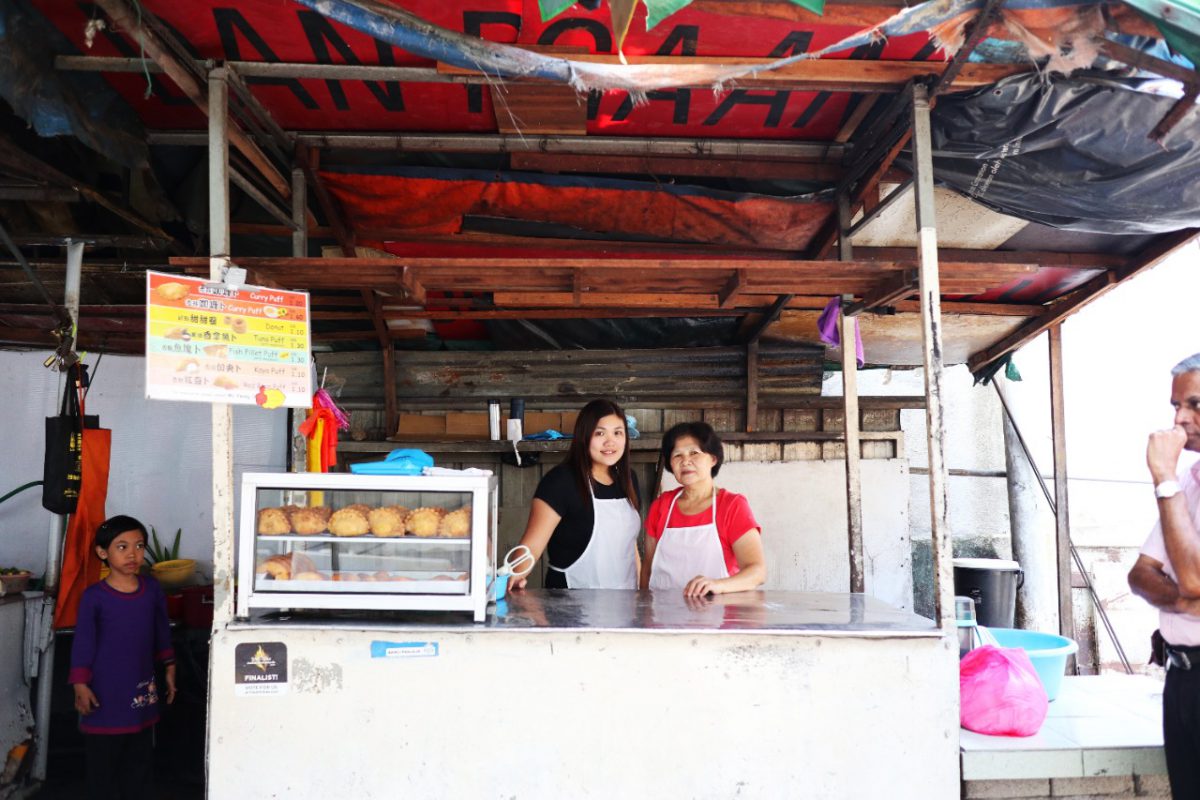 Mrs. Yeong
Mrs. Yeong
The rapid growth of Kuala Lumpur into a major urban centre took place in the late 1880s when the British Colonial administration moved the administrative capital for the state of Selangor from Klang to Kuala Lumpur. By 1887, there were 518 brick and tiled roof buildings in the city (Gullick, 2000).
Each new city block was approximately 150 m long and 40 m wide with predominantly two-storey Neoclassical and Art Deco style shophouses. Narrow laneways of 3-to-5 m wide were designed between the rows as sanitary lanes to allow bullock carts to collect night soil and to provide emergency access.
As development intensified, some low-rise shophouses were demolished to give way to modern high-rise buildings, resulting in an eclectic mix of architecture styles. Even with the advent of modernisation, laneways remain an integral part of Downtown KL’s identity as it offers much more than a path for pedestrians. With established eateries, the provision of food and shade in a compact space offers a unique environment that is attractive for both locals and tourists.